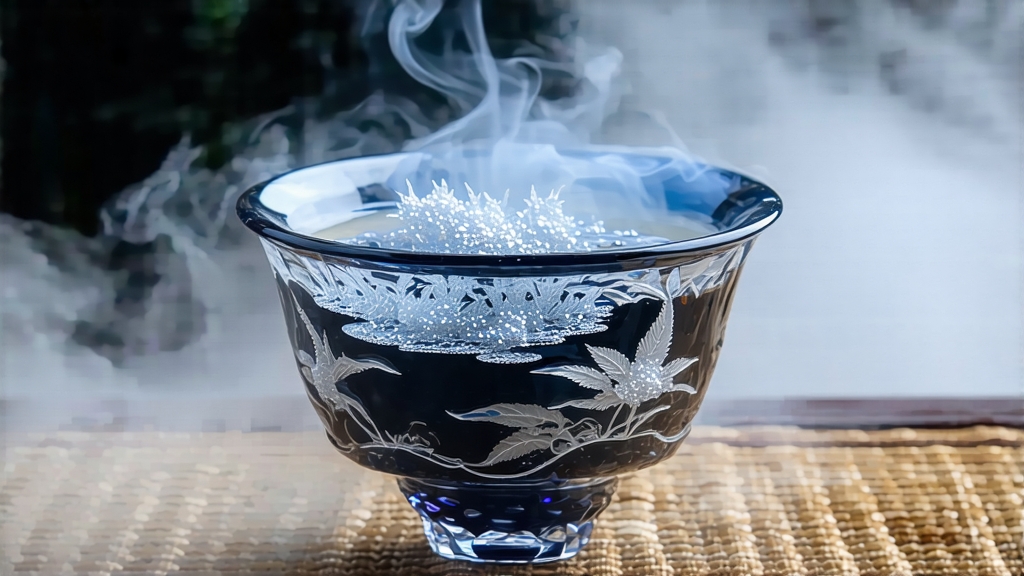
Tucked away in the subtropical highlands of Yunnan Province, where the Mekong River bends like a silver ribbon through ancient forests, a tea that borrows its name from lunar radiance quietly survives the rush of modern commerce. White Moonlight—Bai Yue Guang in its native tongue—is not the most famous Chinese white tea; Silver Needle and White Peony dominate export statistics and Instagram feeds. Yet for connoisseurs who equate rarity with authenticity, White Moonlight offers a sensory passport to a China that mass production forgot. Its leaves carry the cool breath of night air, the resinous perfume of wild camphor trees, and the mineral bite of granite soil. One sip can feel like swallowing a moonbeam that has been filtered through centuries of undocumented folklore.
Historical whispers
Unlike the imperially documented tribute teas of Fujian, White Moonlight has no Ming-dynasty scrolls or Qing-era tax records to certify its pedigree. Local Dai, Hani, and Lahu communities in Yunnan’s Lincang and Xishuangbanna prefectures tell an older, looser story. They speak of a caravan era—perhaps the late Tang—when Pu-erh compressed cakes were bartered for Tibetan horses. Supposedly, muleteers noticed that the top two leaves and a bud, accidentally left in bamboo baskets overnight under a full moon, developed a hauntingly sweet aroma. Rather than discarding the “ruined” tea, they sun-dried it the next morning and discovered a liquor that tasted of honeydew and night-blooming jasmine. Over centuries, this serendipitous process was ritualized: pluck at dusk, wither under the moon, finish at dawn. The tea became a nuptial gift among the Dai, symbolizing a love that, like moonlight, is present even when unseen.
Botanical identity
White Moonlight is not a sub-variety of Camellia sinensis var. sinensis—the small-leaf Fujian shrub that yields classic white teas—but a selection of the larger-leaf var. assamica indigenous to Yunnan. The cultivar locals call “Da Bai Ye” (Big White Leaf) has leaves the size of a child’s palm, thick cuticles, and an unusually high ratio of buds to leaves. These buds are not the silvery downy tips of Silver Needle; instead they are blush-colored, tinged rose or jade depending on the night’s humidity. The large leaf area means more polyphenols and a broader aromatic palette, yet the var. assamica genome gifts the tea a smoother, less astringent backbone than its Indian cousins. In short, White Moonlight is a botanical outsider inside the white-tea family, a genetic reminder that categories are human conveniences, not natural absolutes.
Crafting moonlight
Officially, white tea is defined by minimal withering and drying, never rolling, never pan-firing. White Moonlight obeys the spirit but bends the letter of this law. The process begins at twilight, when leaf temperature drops and enzymatic activity slows. Experienced pluckers—often women who have sung the same harvest songs for three generations—select only the “three treasures”: the bud, the immediate leaf, and the second leaf. Baskets are woven from bamboo too young to retain daytime heat, allowing rapid heat dissipation. Once back at the farmhouse, leaves are spread on raised screens inside open-walled pavilions called “moon pavilions.” Here they remain, untouched, from 8 p.m. until 5 a.m., absorbing dew and the volatiles released by nearby camphor and albizia trees. Night breezes lower the leaf temperature to 15–18 °C, slowing oxidation to a crawl and preserving delicate terpenes that daylight would volatilize. At dawn, if the sun is gentle, the farmer may give the leaves a brief 20-minute “good-morning kiss” of indirect light to fix the color. More often, especially during monsoon season, they are moved into a loft where low-temperature charcoal (below 45 °C) finishes the drying over six to eight hours. The result is a leaf that is bi-colored: one side celadon, the other charcoal-kissed umber, as though the moon and earth signed a truce on its surface.
Terroir variations
Within a 50-kilometer radius, microclimates create three recognized substyles. Jinggu Moonlight